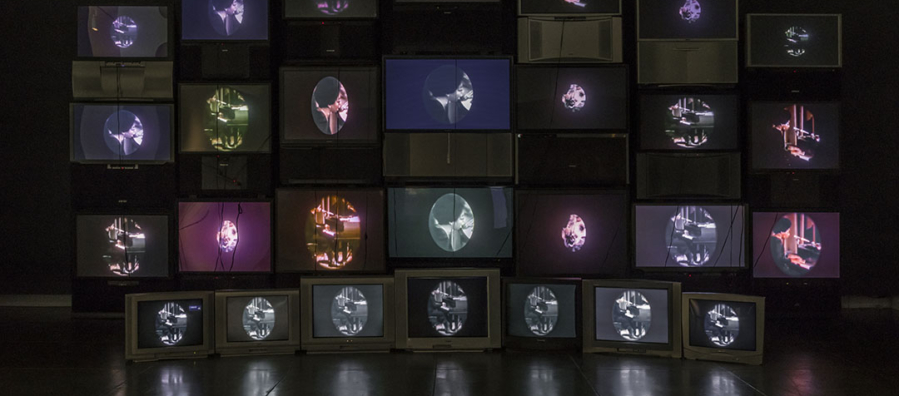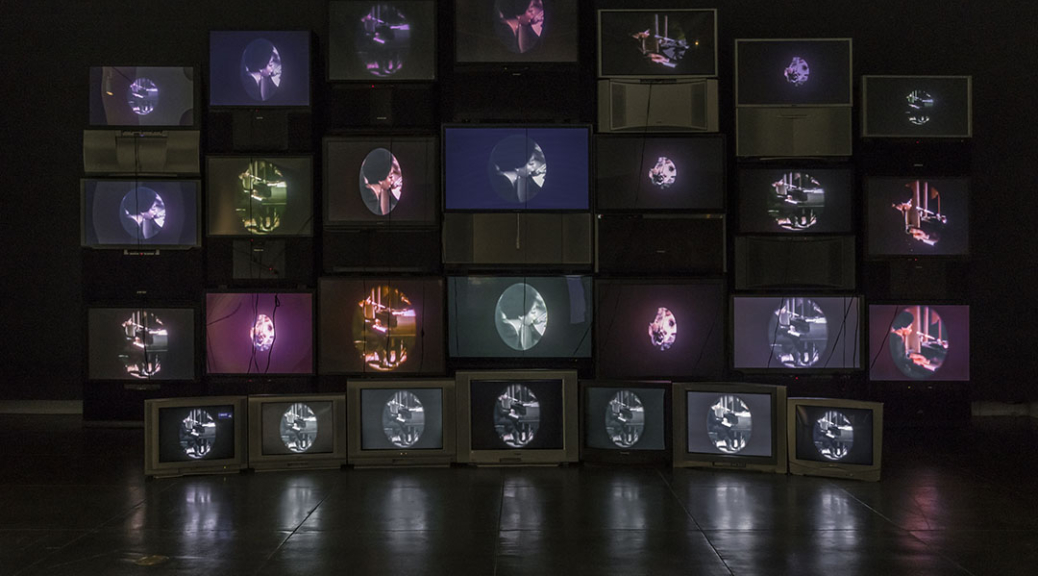February is ending and I’m in a reflective mood. I’d love to take some time to revisit some past exhibitions held at TAM that focused on the work of Black artists. I’d also like to hold space to think about what these artists have left us with and how they’ve helped us access our imaginations and understanding of Blackness.
To start, I’d like to take us back to four years ago. In 2017, 30 Americans found a temporary home at Tacoma Art Museum. This collection of works came from the Rubell Family Collection, which shares the works of 30 prominent and influential modern Black artists created over the last three decades. The exhibition explores how the artists use their own artistic expression to shed light on their understandings of identity- race, gender, sexuality, and class.
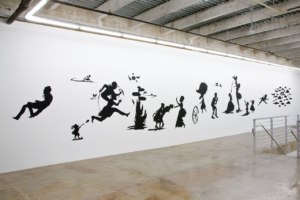
This was the first exhibition I was introduced to at TAM. I remember walking into galleries that were brightly lit and being met with works that were hauntingly beautiful. The first work I set my eyes on had a noose hanging from above and empty chairs surrounding it. I remember walking into another gallery, lights lowered, and seeing Kara Walker’s black silhouette decals across a large white wall. As I got closer, I noticed the imagery the silhouettes represented. It depicted the horrific scenes of slavery and the utter violence and fear it produced. Works in this exhibition stopped me in my tracks and drew me in. They incited an array of emotions—from curiosity to confliction to deep, ugly pain to true understanding. Each artist shed a light on identity in ways unique to them that made perfect sense to me, as a viewer.
If you were able to visit this exhibition, you left with something. That something may have been thoughts, it may have been questions and answers, it may have been another way to understand the complexities of Blackness—regardless, you left with more than what you came with.
“The role of the artist is exactly the same as the role of the lover. If I love you, I have to make you conscious of the things you don’t see.” James Baldwin
Now, let’s move along to 2018, when To Sing of Beauty spent some time with us at TAM.
TAM describes this exhibition as so below:
“To Sing of Beauty presented two video installations that celebrate Blackness by Northwest artist C. Davida Ingram and Atlanta-based Paul Stephen Benjamin. Working from two different regional centers, Benjamin and Ingram combine video imagery and music to make exquisite statements about the power and beauty of Blackness.
For her video diptych, The Deeps: Go Away from My Window, C. Davida Ingram features her collaborators, composer, and vocalist Hanna Benn and actress Rachael Ferguson. Their duet is a powerful statement of desire and longing. In the paired video Procession, Ingram conjures a sense of the African American Northern Migration via railway with the shifting landscape of contemporary Seattle.
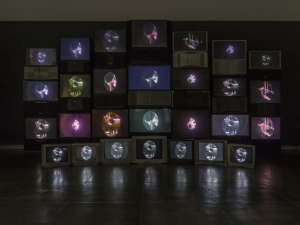
Paul Stephen Benjamin generates a musical round by reworking footage of Nina Simone’s rendition of the traditional song, “Black Is the Color of My True Love’s Hair,” first recorded in 1959 at New York City’s Town Hall. He inserts a subtle audio shift to change Simone’s phrasing into “black is a color” that foregrounds the essence of Blackness. Simone wears a black dress with black boots, sports an Afro, and plays a black piano while sitting on a black bench.”
This was one of the first times I saw a show that focused on video imagery and music in an exhibition. Beautiful can’t begin to describe the components of this show. To me, it was fresh and innovative. It was powerful, its ability to incorporate historical events and historical people through both sound and imagery.
If you visited this show, what do you remember? Do you remember how it made you feel? What it made you think? The colors you saw?
I recall walking into a very dimly lit room. Look to the left, towards one of the only sources of light, and you see a Black woman dressed in black, surrounded by black, playing a black piano. And you hear Nina Simone, an iconic singer, theorist, and cultural worker. Trying to make out the words, you finally notice the audio is saying “Black is a color”. And if you didn’t understand the work before, you understood it a bit more after.
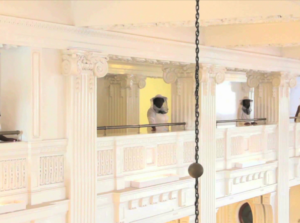
Walking to the other side of the gallery, I remember being met with a bright light. I was mesmerized by this video where Black women kept ascending this long flight of stairs, cloaked in white.
Ingram and Benjamin complemented each other perfectly in this exhibition. The way they were able to thread their works together and create powerful statements, individually and collectively, was astonishing.
The last exhibition we’ll reflect on is Debora Moore’s Arboria. This mystical exhibition visited TAM for a time, from early 2019 to early 2020, and closed early due to COVID-19.
For those unable to see this exhibition, below is Moore’s description of the process of her works and her artistic process:
“Within each work, glass is used like paint to achieve depth of color. The material’s inherent ability to transmit and reflect light, as well as its variations from transparency to opacity, lends itself perfectly to achieve desired textures and surfaces.
By combining new techniques with traditional glassblowing skills, and passionate attention to form detail, these pieces express my vision of an exotic environment, one that is rooted in reality but springs from the imagination.
These works are both a personal meditation on the glorious wonder of nature, as well as a celebration of its power and mystery.”
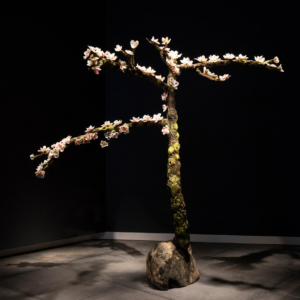
It’s difficult to not fall in love with these pieces and Moore’s attention to detail. Stepping into the gallery, each work seemed so real, taking you to different moments and seasons. It felt fantastical, fairy-like, soft yet powerful. From the deep plums and airy pinks to the frosty whites and vibrant fuchsias, nostalgia was alive in the gallery.
Some made you feel like you were in fairytales.
Others made you feel like you were in a different place, a different environment.
To step into this exhibition, you allowed yourself a moment to step out of wherever you were, mentally, emotionally, and physically, and enter some place new. Art having the ability to do so is a powerful thing. Moore’s works made us want to wonder, want to be still. She reminded us to be present in the moment.
Reflecting on these exhibitions and works reminds me of the endless talent, expression, and variety Black artists grace us with, through thought and their imaginations. They breathe life into their art in unique ways that speak to us differently while speaking to the multitude of ways identity and experience is mapped into Blackness. They’ve guided us to see new things and took us to new places—they’ve transformed us. We left each work with more than we could ask for.
